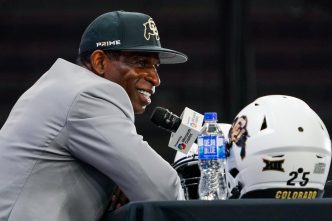Georgia Bulldog fans are definitely on edge right now as they anxiously await updates on their standout quarterback, Carson Beck. In the SEC Championship game against Texas, Beck took a significant hit that injured his elbow, casting doubt over his availability for the college playoffs. While we don’t yet know if he’ll suit up in the playoffs, we do have insights into the injury itself. You’ve probably heard sportscasters mention terms like MCL and UCL in discussing his status. Basically, Beck injured the medial ligament of his elbow, a crucial component for any quarterback.
Understanding the UCL
The UCL, or ulnar collateral ligament, plays a pivotal role in stabilizing the elbow against lateral forces that try to pull the forearm away from the body. Think of your elbow as a door hinge; the UCL acts as that inner support keeping things tight and functional. This ligament is vital when it comes to throwing motions, which puts it under considerable stress. Sound familiar? That’s because this injury often crops up in the world of baseball, where pitchers can injure this so-called “Tommy John” ligament, necessitating surgery to fix it.
The heart of Beck’s injury
What sets Carson Beck’s current situation apart is that his injury stemmed from an acute traumatic event. As he wound up for a Hail Mary pass just before halftime, his arm was hit, subjecting a previously healthy ligament to a sudden and intense strain. This scenario starkly contrasts with how baseball pitchers generally suffer UCL injuries. In baseball, the ligament tends to deteriorate gradually from repetitive stress, akin to a fraying shoelace. By the time it snaps, it’s already weakened and requires a surgical procedure to reconstruct it, typically using a tendon to reinforce the damaged ligament.
When we’re dealing with an injury to an otherwise robust ligament like Carson’s, there’s a silver lining—it may have the potential to heal naturally, depending on the severity of the tear.
Assessing the tear severity
Doctors typically assess these sudden ligament tears using a 3-point grading system, employing MRIs and physical examinations. A Type 1 tear involves minimal internal damage or a simple “sprain” of the ligament. Should Beck be facing a Type 1 tear, he still has a chance to take the field during the playoffs. A Type 2 tear is more serious, indicating a partial failure of the ligament but with some fibers still holding on. If Beck falls into this category, he’d likely be sidelined for the remainder of the playoffs, as recovery can take several months. Then there’s the Type 3 tear, which is a complete rupture of the ligament. Interestingly, for non-throwing athletes, even this severe type can heal without surgical intervention. However, for a college quarterback like Carson, surgery might be advised to ensure his elbow regains the strength and stability needed for competitive play.
Despite the uncertainty surrounding Beck’s condition, Bulldog fans can still hold onto a flicker of hope. There’s a possibility, albeit slim, that Carson might return in time to lead the Bulldogs in the playoffs. It ultimately comes down to the severity of his injury and how his recovery progresses.







